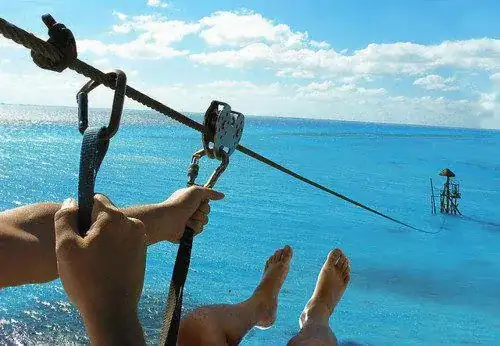I saw this picture on one of my social media sites with the caption, "I'd do this in a heart beat! Who's with me!"

I was about to go balls to the walls and say, "I'm in! When and where??" But then I got to thinking, how fast would I be going when I hit the water? If I were going too fast, would it hurt me?
SO I was trying to figure this out, and I'm not very good at physics so I was wondering if you guys could help me out.
I estimate the guy is 90 kg in mass, the wire is angled pi/6 from the horizontal and he's about 50 meters above the water when he starts (all estimates...).
What is the formulas I need to figure out the speed the guy will be going once he hits the water? I know there's some calculus in there, and I'm pretty good at calculus.